- Home
- Wilkie Collins
Woman in White (Barnes & Noble Classics Series) Page 4
Woman in White (Barnes & Noble Classics Series) Read online
Page 4
If we look deeper into some of these sketches, we can see Collins subverting and complicating what could be considered typical stereotypes. Mannish woman Marian, for example, certainly has some masculine physical traits—a less than feminine handsomeness topped off by her mustache—but her body is repeatedly described as beautiful. According to Collins, hers is the ideal natural female shape, one undeformed by the use of corsetry and other restrictive undergarments, which the author was adamantly against. Collins has been quoted as telling his friend Sarony, the famous portrait photographer, “I too think the back view of a finely formed woman the loveliest view, and her hips the more precious part of that view. The line of beauty in those parts enchants me.” Both Walter and Fosco also find her tempting, and they are not the only ones: Collins received serious letters from male fans of the novel who stated their social position and income, then begged the author to divulge the name of his original inspiration, the real person behind Marian Halcombe, because they intended to propose marriage to her. And many later critics have suggested that Walter’s affection for Marian is more than brotherly and that the novel’s final domestic sphere—the triumphant cohabitating power trio of Walter, Laura, and Marian—borders on a ménage à trois.
As a typically superior woman, however, Marian disdains other superior women, calling even Queen Elizabeth “highly overrated.” And she seems to be without romantic feeling, almost ensuring the novel’s tragedies by separating Walter from the object of his obsessive passion. Her formidable courage attracts Count Fosco, who suggests certain personal arrangements that Marian finds loathsome and unspeakable. The closest thing she feels to romantic impulse circumscribes her sisterly intimacy with Laura and is presented in nearly sexual terms. Collins excised certain passages from the manuscript that might have brought the suggestion of lesbian erotic devotion to the forefront. Of her sister’s impending marriage, Marian laments in the manuscript, “In less than a month, she will be his Laura instead of mine! [italics hers] The bare thought of it throws my mind into such confusion that I can neither look back nor look forward. I can only ask myself—must the sacrifice be made? Is there no way of escape for us before the twenty-third?”
Passion is a crushing force in The Woman in White. Collins the sensationalist is leagues from being a sentimentalist here; and even though love is delicately expressed, the plot treats it like trash. Insofar as Walter gushes about his feelings for Laura, for most of the book they are simultaneously feelings of misery—extremely accurate ones the reader certainly identifies with, perhaps too much so at times—but misery and love are true partners here, their association spiced with the utter impossibility of romance on all levels. The book’s antiromantic tendencies are nowhere more evident than when Marian, in a fit of decorum she will come to rue, orders Walter not only to leave the Limmeridge estate but to cross an ocean in order to sufficiently escape any temptation to an affair with one of his social superiors. Love ruins Walter’s life for a time, just as the protagonists’ inability to deal with potentially revolutionary unregulated desire ultimately brings about everyone’s unhappiness.
One surprising thing about this novel is that even though its sense of propriety about what can and cannot be spoken and who can or cannot fall in love with whom is very strongly situated in a typically rigid Victorian social and moral context, relatively few details (mentions of specific years aside) would designate to a reader any particular time or place. Essentially, by altering alarmingly few items, The Woman in White could very well be a novel of emotionally constipated characters of almost any period or culture. The emotional burdens under which these characters suffer—particularly those of postponed lovers Laura and Walter—are universal nightmares applicable to sweethearts star-crossed for a variety of reasons. Such feelings ring true even if the context no longer does, and Collins’s manipulative skill at evoking emotions forces us to feel the romantic trauma so deeply. Even if the plot shocks that thrilled the Victorians seem tame by the standards of a modern readership, the emotional components remain strong.
As may be expected from such a popular piece of fiction—the novel has never been out of print—The Woman in White has been adapted numerous times for the stage and film. The first theatrical version was produced without Collins’s consent and appeared only three months after the concluding episode of the novel was printed in All the Year Round. Staged at the Surrey Theatre in Lambeth, it was designed to capitalize quickly on the story’s success; in keeping with the nature of the dramas usually staged at the Surrey—whose name had become synonymous with a sensational, melodramatic style of play—the production emphasized the more astonishing moments of the story and exploited the special effects of stage machinery to create a shocking audience experience. Collins threatened to sue, but he never actually went to court about it. Instead, he wrote his own dramatic adaptation in 1871, one that disturbed audience expectations for the popular tale by toying with the novel’s sequence of events and transporting such classic scenes as the title character’s startling first appearance on the moonlit Hampstead heath to the innocuous Swiss chalet at Limmeridge. Collins also eschewed the shock value of special mechanical effects, further de-sensationalizing his play by having Sir Percival die in the wings and not in a fiery onstage cataclysm.
Reading the script, one cannot ignore the stilted lengths to which Collins went to telegraph pertinent information about his characters that had been developed slowly in the novel. Count Fosco, for example, upon failing to persuade Walter to give him Anne Catherick’s cautionary letter to Laura, proclaims, “A man who can resist the magnetic personal influence which I exercise over my fellow-creatures is a man who piques my curiosity.” Notwithstanding such drawbacks, the production was a success and ran from October 9, 1871, to February 24, 1872, despite additional criticism of the lead actor’s portrayal of the Count (whose Italian accent was unreliable) and the repackaging of the conclusion into Fosco’s abrupt drawing-room assassination by two dagger-wielding intruders as he feeds bonbons to his canaries while packing for his last-minute escape. The iconic poster for the show, created by Fred Walker, features a frightened woman, bundled in white drapery, who looks over her shoulder while she pushes her way through an open door and flees into the night. Its cramped perspective and substantial central figure echo Pre-Raphaelite design, and, fittingly for the visual artist in Collins, it is one of the finest examples of nineteenth-century English poster illustration.
The first film versions of The Woman in White were two American silents released in 1912. A longer silent adaptation followed in 1914; titled The Dream Woman, the film was helmed by Alice Guy Blaché, widely recognized as the first female film director. Of the novel’s many later celluloid renditions, the 1948 Warner Bros. adaptation features not only numerous changes to the plot and characters (Marian is made beautiful, for example) but also Sidney Greenstreet—most famous for portraying other nefarious rotund men opposite Humphrey Bogart in The Maltese Falcon and Casablanca—as Count Fosco, in one of his final screen appearances. As I write this introduction, Andrew Lloyd Webber, composer of such phenomenally long-lived shows as Cats and The Phantom of the Opera, has just opened a West End musical based on the novel. Rumor has it that Sir Percival’s secret is much darker here and that Anne Catherick is no longer Laura’s exact, although still deranged, double. In contrast to Collins’s own dramatic adaptation, this new production exploits the latest technological stagecraft by using video projections instead of physical set backdrops. British playwright Charlotte Jones bore the difficult task of transforming Collins’s text for the musical, executing necessary functions such as streamlining the plot and deleting some characters (sadly, the Countess Fosco did not make the cut). But she also has addressed potential discrepancies between nineteenth- and twenty-first-century tastes by reducing the number of improbable coincidences and plot twists that Victorian audiences expected and relished. Happily, Jones has also given Laura Fairlie more backbone than Collins had endowed her with. The new, imp
roved Laura perhaps will take a stand next to impatient Marian as the pair attempts to show that, for her deliverance, a woman need not rely only on a man’s resolution.
Camille Cauti has a Ph.D. in English from Columbia University. Her dissertation concerns the Catholic conversion trend among the London avant-garde in the 1890s, including such figures as Oscar Wilde, Ernest Dowson, John Gray, and Michael Field. Other academic interests have included nineteenth- and twentieth-century English poetry (in particular, John Keats, the Pre-Raphaelites, W. B. Yeats, and the connections between them), and Irish literature generally. She has also published on Italian-American studies. Cauti is a teacher, editor, and critic in New York. She also wrote the introductions and notes to the Barnes & Noble Classics editions of Oscar Wilde’s The Picture of Dorian Gray and Louisa May Alcott’s Little Women.
To
BRYAN WALLER PROCTER;1
From one of his younger brethren in literature, who
sincerely values his friendship, and who gratefully remembers
many happy hours spent in his house.
Preface [1860]
AN EXPERIMENT IS ATTEMPTED in this novel, which has not (so far as I know) been hitherto tried in fiction. The story of the book is told throughout by the characters of the book. They are all placed in different positions along the chain of events; and they all take the chain up in turn, and carry it on to the end.
If the execution of this idea had led to nothing more than the attainment of mere novelty of form, I should not have claimed a moment’s attention for it in this place. But the substance of the book, as well as the form, has profited by it. It has forced me to keep the story constantly moving forward; and it has afforded my characters a new opportunity of expressing themselves, through the medium of the written contributions which they are supposed to make to the progress of the narrative.
In writing these prefatory lines, I cannot prevail on myself to pass over in silence the warm welcome which my story has met with, in its periodical form, among English and American readers. In the first place, that welcome has, I hope, justified me for having accepted the serious literary responsibility of appearing in the columns of ‘All The Year Round’, immediately after Mr. Charles Dickens had occupied them with the most perfect work of constructive art that has ever proceeded from his pen.2 In the second place, by frankly acknowledging the recognition that I have obtained thus far, I provide for myself an opportunity of thanking many correspondents (to whom I am personally unknown) for the hearty encouragement I received from them while my work was in progress. Now, while the visionary men and women, among whom I have been living so long, are all leaving me, I remember very gratefully that ‘Marian’ and ‘Laura’ made such warm friends in many quarters, that I was peremptorily cautioned at a serious crisis in the story, to be careful how I treated them—that Mr. Fairlie found sympathetic fellow-sufferers, who remonstrated with me for not making Christian allowance for the state of his nerves—that Sir Percival’s ‘secret’ became sufficiently exasperating, in course of time, to be made the subject of bets (all of which I hereby declare to be ‘off’)—and that Count Fosco suggested metaphysical considerations to the learned in such matters (which I don’t quite understand to this day), besides provoking numerous inquiries as to the living model, from which he had been really taken. I can only answer these last by confessing that many models, some living, and some dead, have ‘sat’ for him; and by hinting that the Count would not have been as true to nature as I have tried to make him, if the range of my search for materials had not extended, in his case as well as in others, beyond the narrow human limit which is represented by one man.
In presenting my book to a new class of readers, in its complete form, I have only to say that it has been carefully revised; and that the divisions of the chapters, and other minor matters of the same sort, have been altered here and there, with a view to smoothing and consolidating the story in its course through these volumes. If the readers who have waited until it was done, only prove to be as kind an audience as the readers who followed it through its weekly progress, ‘The Woman in White’ will be the most precious impersonal Woman on the list of my acquaintance.
Before I conclude, I am desirous of addressing one or two questions, of the most harmless and innocent kind, to the Critics.
In the event of this book being reviewed, I venture to ask whether it is possible to praise the writer, or to blame him, without opening the proceedings by telling his story at second-hand? As that story is written by me—with the inevitable suppressions which the periodical system of publication forces on the novelist—the telling it fills more than a thousand closely printed pages. No small portion of this space is occupied by hundreds of little ‘connecting links’, of trifling value in themselves, but of the utmost importance in maintaining the smoothness, the reality, and the probability of the entire narrative. If the critic tells the story with these, can he do it in his allotted page, or column, as the case may be? If he tells it without these, is he doing a fellow-labourer in another form of Art, the justice which writers owe to one another? And lastly, if he tells it at all, in any way whatever, is he doing a service to the reader, by destroying, beforehand, two main elements in the attraction of all stories—the interest of curiosity, and the excitement of surprise?
Harley Street, London
August, 3 1860
Preface to the Present Edition [1861 ]
‘THE WOMAN IN WHITE’ has been received with such marked favour by a very large circle of readers, that this volume scarcely stands in need of any prefatory introduction on my part. All that it is necessary for me to say on the subject of the present edition—the first issued in a portable and popular form—may be summed up in few words.
I have endeavoured, by careful correction and revision, to make my story as worthy as I could of a continuance of the public approval. Certain technical errors which had escaped me while I was writing the book are here rectified. None of these little blemishes in the slightest degree interfered with the interest of the narrative—but it was as well to remove them at the first opportunity, out of respect to my readers; and in this edition, accordingly, they exist no more.
Some doubt having been expressed, in certain captious quarters, about the correct presentation of the legal ‘points’ incidental to the story, I may be permitted to mention that I spared no pains—in this instance, as in all others—to preserve myself from unintentionally misleading my readers. A solicitor of great experience3 in his profession most kindly and carefully guided my steps, whenever the course of the narrative led me into the labyrinth of the Law. Every doubtful question was submitted to this gentleman, before I ventured on putting pen to paper; and all the proof-sheets which referred to legal matters were corrected by his hand before the story was published. I can add, on high judicial authority, that these precautions were not taken in vain. The ‘law’ in this book has been discussed, since its publication, by more than one competent tribunal, and has been decided to be sound.
One word more, before I conclude, in acknowledgment of the heavy debt of gratitude which I owe to the reading public.
It is no affectation on my part to say that the success of this book has been especially welcome to me, because it implied the recognition of a literary principle which has guided me since I first addressed my readers in the character of a novelist.
I have always held the old-fashioned opinion that the primary object of a work of fiction should be to tell a story; and I have never believed that the novelist who properly performed this first condition of his art, was in danger, on that account, of neglecting the delineation of character—for this plain reason, that the effect produced by any narrative of events is essentially dependent, not on the events themselves, but on the human interest which is directly connected with them. It may be possible, in novel-writing, to present characters successfully without telling a story; but it is not possible to tell a story successfully without presenting characters: their existence, as
recognisable realities, being the sole condition on which the story can be effectively told. The only narrative which can hope to lay a strong hold on the attention of readers, is a narrative which interests them about men and women—for the perfectly obvious reason that they are men and women themselves.
The reception accorded to ‘The Woman in White’ has practically confirmed these opinions, and has satisfied me that I may trust to them in the future. Here is a novel which has met with a very kind reception, because it is a Story; and here is a story, the interest of which—as I know by the testimony, voluntarily addressed to me, of the readers themselves—is never disconnected from the interest of character. ‘Laura’, ‘Miss Halcombe’, and ‘Anne Catherick’; ‘Count Fosco, ’Mr. Fairlie’, and ‘Walter Hartright’; have made friends for me wherever they have made themselves known. I hope the time is not far distant when I may meet those friends again, and when I may try, through the medium of new characters, to awaken their interest in another story.
Harley Street, London,
February, 1861
THE FIRST EPOCH
The Story begun by Walter Hartright, of Clement’s Inn,a Teacher of Drawing.
I
THIS IS THE STORY of what a Woman’s patience can endure, and what a Man’s resolution can achieve.
If the machinery of the Law could be depended on to fathom every case of suspicion, and to conduct every process of inquiry, with moderate assistance only from the lubricating influences of oil of gold, the events which fill these pages might have claimed their share of the public attention in a Court of Justice.

 The Woman in White
The Woman in White The Queen of Hearts
The Queen of Hearts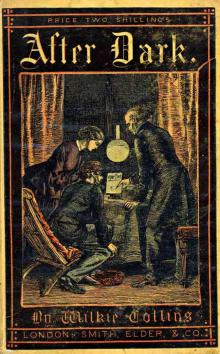 Miss Jeromette and the Clergyman
Miss Jeromette and the Clergyman Man and Wife
Man and Wife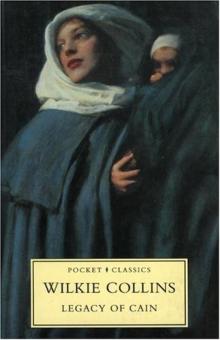 The Legacy of Cain
The Legacy of Cain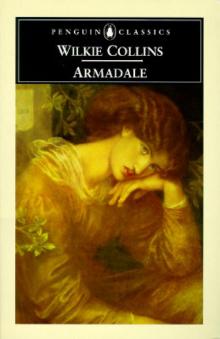 Armadale
Armadale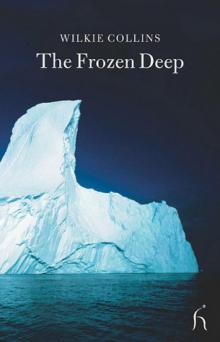 The Frozen Deep
The Frozen Deep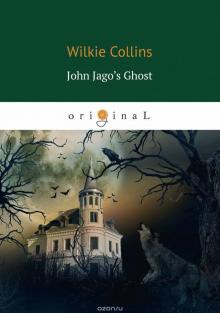 John Jago's Ghost or the Dead Alive
John Jago's Ghost or the Dead Alive Poor Miss Finch
Poor Miss Finch The Cauldron of Oil: A Case Worth Looking At
The Cauldron of Oil: A Case Worth Looking At The Poisoned Meal
The Poisoned Meal The Moonstone
The Moonstone My Lady's Money
My Lady's Money Classic Ghost Stories
Classic Ghost Stories Jezebel's Daughter
Jezebel's Daughter The Devil's Spectacles
The Devil's Spectacles I Say No
I Say No Miss or Mrs.?
Miss or Mrs.? Nine O'Clock
Nine O'Clock The Lawyer's Story of a Stolen Letter
The Lawyer's Story of a Stolen Letter The Two Destinies
The Two Destinies Mr. Percy and the Prophet
Mr. Percy and the Prophet The Law and the Lady
The Law and the Lady The Nun's Story of Gabriel's Marriage
The Nun's Story of Gabriel's Marriage After Dark
After Dark Mr. Captain and the Nymph
Mr. Captain and the Nymph No Name
No Name The Moonstone (Penguin Classics)
The Moonstone (Penguin Classics) Antonina
Antonina Woman in White (Barnes & Noble Classics Series)
Woman in White (Barnes & Noble Classics Series) Miss or Mrs
Miss or Mrs The Dead Alive
The Dead Alive Basil
Basil A Rogue's Life
A Rogue's Life The New Magdalen
The New Magdalen Blind Love
Blind Love Little Novels
Little Novels The Lazy Tour of Two Idle Apprentices
The Lazy Tour of Two Idle Apprentices The Haunted Hotel
The Haunted Hotel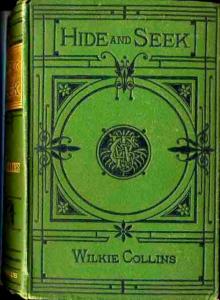 Hide and Seek
Hide and Seek